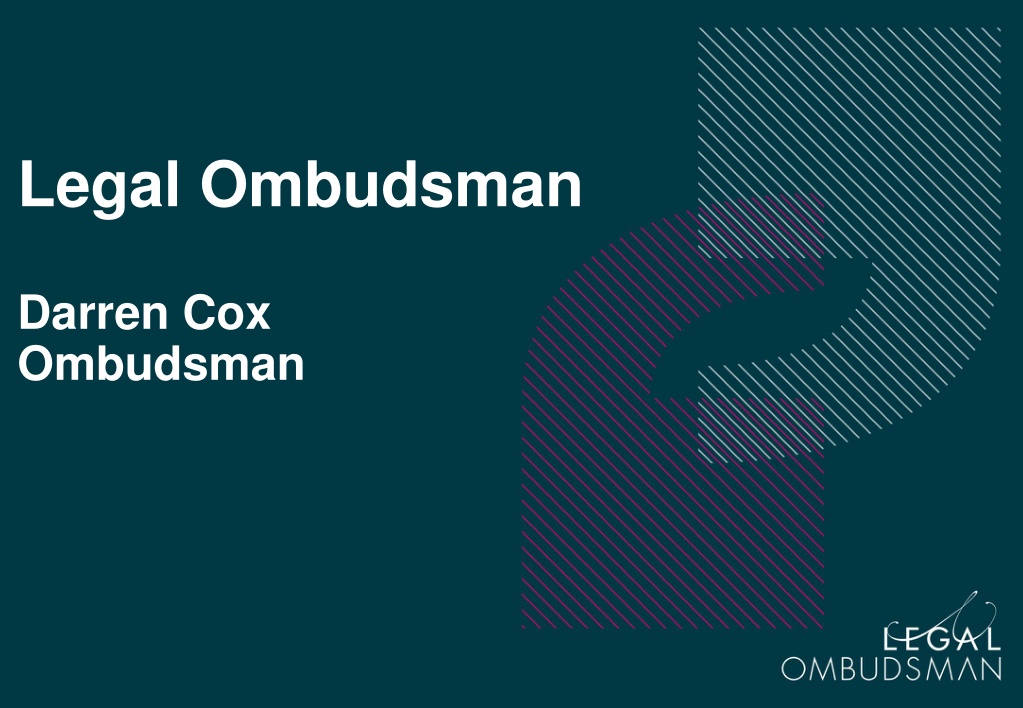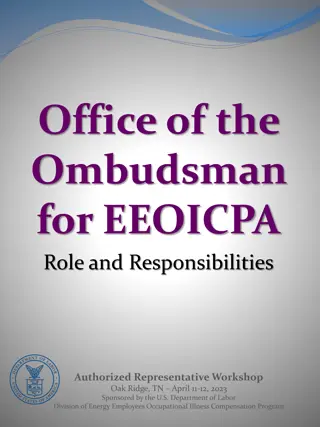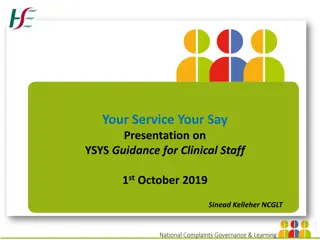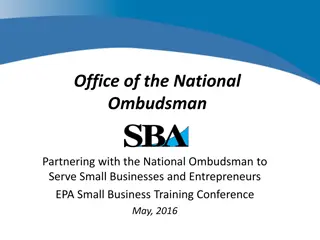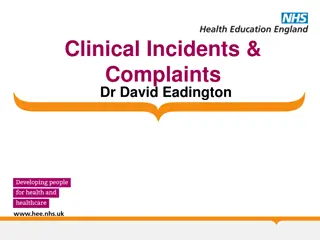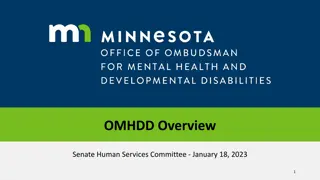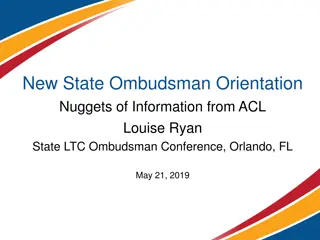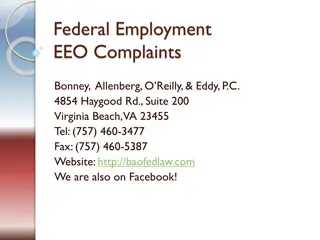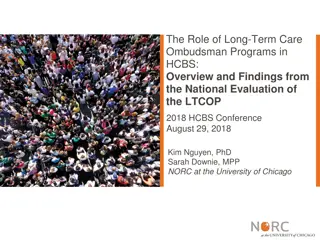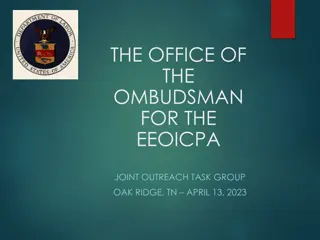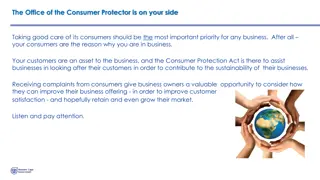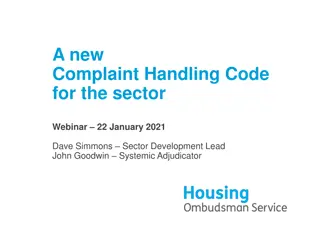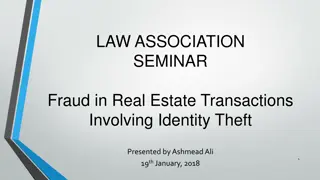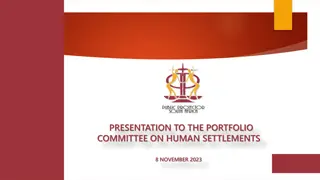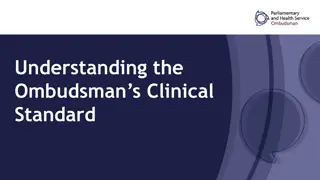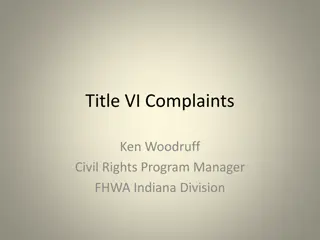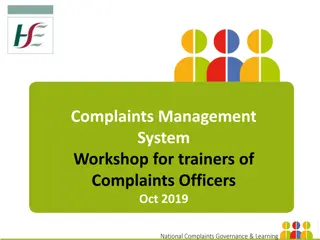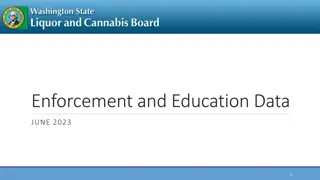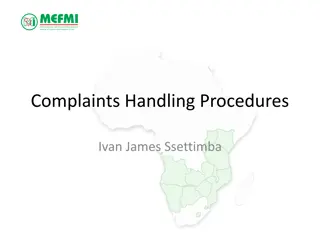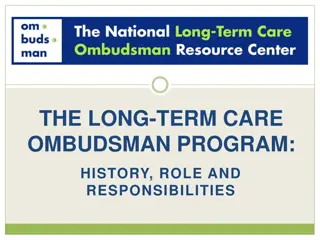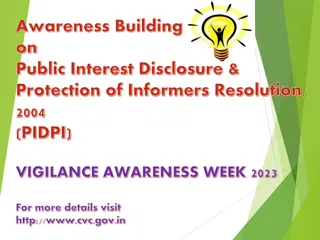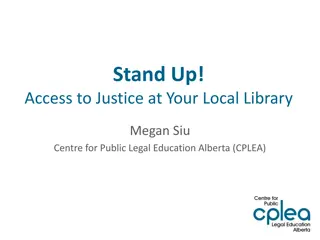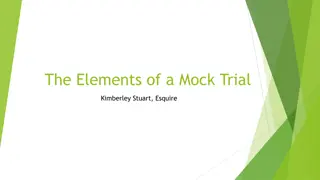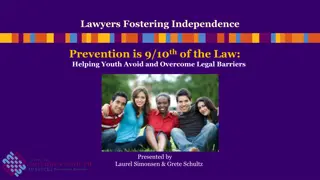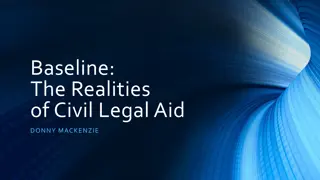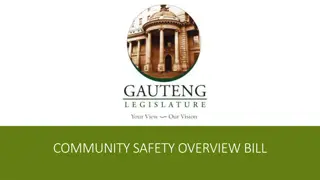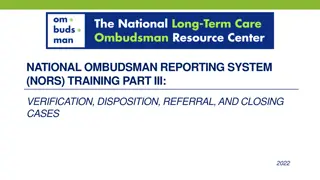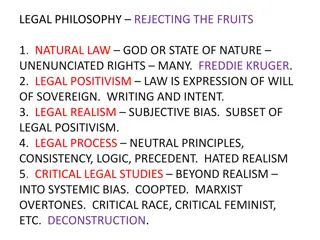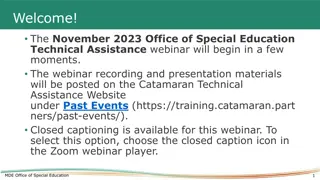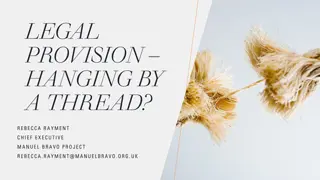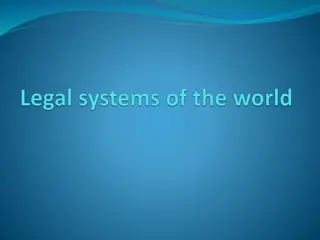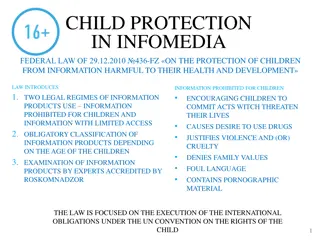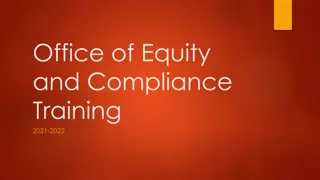Legal Ombudsman - Complaints Process and Common Conveyancing Issues
Legal Ombudsman Darren Cox oversees a complaints process that involves assessment, investigation, and decision-making on various legal matters, with a significant number of contacts and complaints handled each year. The top areas of law for client complaints include residential conveyancing, family law, wills & probate, personal injury, and litigation. Common conveyancing complaints include delays, failure to advise, and stamp duty issues. Additionally, new challenges in conveyancing such as cybercrime and fraud require legal professionals to take necessary precautions. Remedies for conveyancing issues vary, including compensation for financial loss and emotional impact.
Uploaded on Sep 20, 2024 | 0 Views
Download Presentation

Please find below an Image/Link to download the presentation.
The content on the website is provided AS IS for your information and personal use only. It may not be sold, licensed, or shared on other websites without obtaining consent from the author. Download presentation by click this link. If you encounter any issues during the download, it is possible that the publisher has removed the file from their server.
E N D
Presentation Transcript
Legal Ombudsman Darren Cox Ombudsman
LeO Complaints Process Our business process Assessment Investigation Decision 60,000 contacts 18,000 complaints 7,635 7,440 resolved investigated 19
Client care - Top 5 Areas of Law Complaint volumes by area of law Residential conveyancing Family 1394 867 824 796 653 1865 6399 2015/16 Wills & Probate Personal Injury Litigation 7440 1698 1023 873 879 661 2306 2014/15 Other 8055 1605 1381 1021 805 756 2487 2013/14 7630 1346 1375 1056 731 758 2364 2012/13 0 500 1000 1500 2000 2500 3000 3500 4000 4500 5000 5500 6000 6500 7000 7500 8000 8500 3
Complaint types 2015/16 Delay / failure to progress 20% Costs Failure to advise Failure to follow instructions 17% Failure to communicate Residential conveyancing Wills and probate Family 11% 24% 16% 23% 19% 12% 14% 17% 17% 28% 13% 17% 16% 4
Common conveyancing complaints Delay / Failure to progress - Reason = third party actions (local authority searches, other conveyancers) - Your role = explain the process Failure to advise - Potential reasons = restrictive covenants (new builds, parking spaces, running a business) and boundary issues - Your role = highlight issues and advise on implications 5
Common complaints.. Stamp duty - Stamp duty mitigation schemes - Oversight in post-completion work - Early warning of financial problems - Closure of firms 6
New issues in conveyancing Cybercrime and fraud Take reasonable precautions: - your own processes - informing consumers Follow regulator guidance - http://www.conveyancer.org.uk/CLC- Lawyer/Tackling-Cybercrime.aspx 7
Remedies Conveyancing remedies No remedy, 24% Questions: Has there been poor service? Has poor service led to any specific loss or disadvantage to the customer? Can we put the customer back in the position they would have been in? What remedy is appropriate? Other, 22% Compensation for financial loss, 10% Refund / limit fees, 11% Compensation for emotional impact, 33% 8
Remedies Award Rationale Modest 50 - 250 Impact of poor service was short-lived and no longer exists Significant 250 - 750 Impact of poor service was serious but not permanent Serious 750 + Impact of poor service was long-term and affected customer s wellbeing or life http://www.legalombudsman.org.uk/?portfolio=guidance-our- approach-to-remedies 9
Complaints handling regulatory requirements LSB requires that consumers understand their right to complain to their lawyer escalate a complaint to the Legal Ombudsman And so poor complaints handling can lead to o Potential case fee o Misconduct referral to the regulator o Customers coming to the Legal Ombudsman 10
From a consumer perspective Concerns about: - Impact on existing case - Impact on relationship - Is it worth complaining about a lawyer - How to complain So . if you were a consumer: - Would you know your firm had a complaints handling procedure? - How easy would it be to find? - If you phoned reception, how would they respond to the complaint? - Would you think your firms procedure was too complex? - Does your procedure encourage consumers to raise concerns? 11
From a lawyer perspective Would you recognise a complaint? Expression of Dissatisfaction (Scheme Rules s1.6) Is it clear how to respond? - What issues can lawyers deal with themselves? - When should they escalate issues or start the formal complaints process? - Is there help with challenging situations? - Are there any early warning systems in place? 12
Best practice What does a good response look like? Tone and language Maintain a professional and courteous tone. Clear language, as little jargon as possible. What are the issues? Be clear what issues you have considered. What are your conclusions? If you disagree with the customers views say so, and your reasons why. If you agree with any of the issues, acknowledge this, and explain why you agree. Remember that an apology is not an acknowledgement of liability (scheme rules 5.21) How do you intend to resolve the complaint? What can you do to resolve the complaint. Next steps: What are the options if the customer disagrees? If it is your final response, say so, and include full details for the Legal Ombudsman 13
Resources 14
Complaint handling Feeding back to the profession Attend our complaints handling course CPD accredited. Visit our website for News, Research, Decisions and a dedicated section for Lawyers Publications - Thematic reports, guidance and consultations LeO news sign up to receive it through our website Social media LinkedIn and Twitter @Legal_Ombudsman 9
Feedback and questions If you have any feedback or questions please email courses@legalombudsman.org.uk
